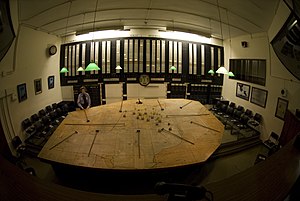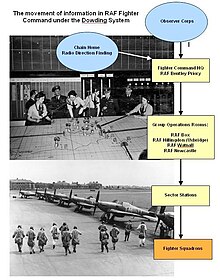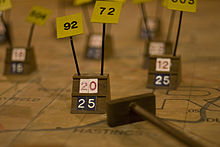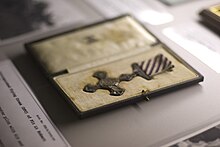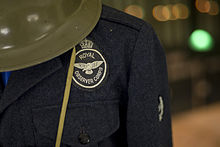
Air Chief Marshal Hugh Caswall Tremenheere Dowding, 1st Baron Dowding, was a senior officer in the Royal Air Force. He was Air Officer Commanding RAF Fighter Command during the Battle of Britain and is generally credited with playing a crucial role in Britain's defence, and hence, the defeat of Operation Sea Lion, Adolf Hitler's plan to invade Britain.

The Battle of Britain was a military campaign of the Second World War, in which the Royal Air Force (RAF) and the Fleet Air Arm (FAA) of the Royal Navy defended the United Kingdom (UK) against large-scale attacks by Nazi Germany's air force, the Luftwaffe. It was the first major military campaign fought entirely by air forces. The British officially recognise the battle's duration as being from 10 July until 31 October 1940, which overlaps the period of large-scale night attacks known as the Blitz, that lasted from 7 September 1940 to 11 May 1941. German historians do not follow this subdivision and regard the battle as a single campaign lasting from July 1940 to May 1941, including the Blitz.

Battle of Britain is a 1969 British war film documenting the events of the Battle of Britain, the war for aerial supremacy between the German Luftwaffe and the defending Royal Air Force waged over British skies during summer of 1940. The nature of the subject drew many respected British actors to accept roles as key figures of the battle, including Laurence Olivier as Air Chief Marshal Sir Hugh Dowding, Trevor Howard as Air Vice-Marshal Keith Park, and Patrick Wymark as Air Vice-Marshal Trafford Leigh-Mallory. Directed by Guy Hamilton and produced by Harry Saltzman and S. Benjamin Fisz, it also starred Michael Caine, Christopher Plummer, and Robert Shaw as Squadron Leaders. The script by James Kennaway and Wilfred Greatorex was based on the book The Narrow Margin by Derek Wood and Derek Dempster.

Air Chief Marshal Sir Keith Rodney Park, was a New Zealand-born officer of the Royal Air Force (RAF). During the Second World War, his leadership of the RAF's No. 11 Group was pivotal to the defeat of the Luftwaffe in the Battle of Britain.
The Big Wing, also known as a Balbo, was an air fighting tactic proposed during the Battle of Britain by 12 Group commander Air Vice-Marshal Trafford Leigh-Mallory and Acting Squadron Leader Douglas Bader. In essence, the tactic involved meeting incoming Luftwaffe bombing raids in strength with a wing-shaped formation of three to five squadrons. In the Battle, this tactic was employed by the Duxford Wing, under Bader's command.

Air Chief Marshal Sir Trafford Leigh-Mallory, was a senior commander in the Royal Air Force. Leigh-Mallory served as a Royal Flying Corps pilot and squadron commander during the First World War. Remaining in the newly formed RAF after the war, Leigh-Mallory served in a variety of staff and training appointments throughout the 1920s and 1930s.
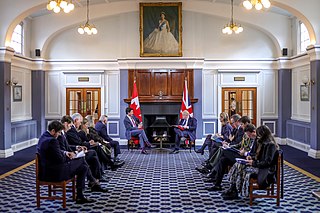
Royal Air Force Northolt or more simply RAF Northolt is a Royal Air Force station in South Ruislip, 2 nautical miles from Uxbridge in the London Borough of Hillingdon, western Greater London, England, approximately 6 mi (10 km) north of Heathrow Airport. As London VIP Airport, the station handles many private civil flights in addition to Air Force flights.

RAF Bentley Priory was a non-flying Royal Air Force station near Stanmore in the London Borough of Harrow. It was the headquarters of Fighter Command in the Battle of Britain and throughout the Second World War. The Royal Air Force station closed its operations on 30 May 2008, with all units relocating to new accommodation at RAF Northolt, a few miles away.

RAF Uxbridge was a Royal Air Force (RAF) station in Uxbridge, within the London Borough of Hillingdon, occupying a 44.6-hectare (110-acre) site that originally belonged to the Hillingdon House estate. The British Government purchased the estate in 1915, three years before the founding of the RAF. Until the outbreak of the Second World War in 1939, the station was open to the public.

No. 13 Group RAF was a group in the Royal Air Force for various periods in the 20th century. It is most famous for having the responsibility for defending the North of the United Kingdom during the Battle of Britain.

No. 11 Group is a group in the Royal Air Force first formed in 1918. It had been formed and disbanded for various periods during the 20th century before disbanding in 1996 and reforming again in 2018. Its most famous service was in 1940 in the Battle of Britain during the Second World War, when it defended London and the south-east of the United Kingdom from attacks by the German Luftwaffe. It was reformed in late 2018 as a "multi-domain operations group" to ensure the service thinks and acts in a networked way.
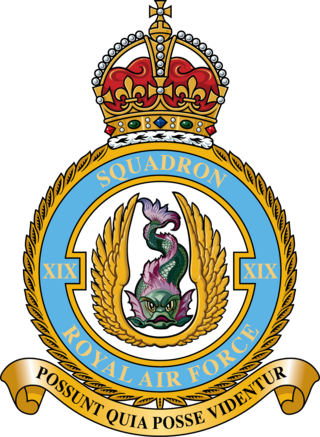
No. 19 Squadron is a squadron of the Royal Air Force. It was the first squadron to operate the Supermarine Spitfire. It currently operates the UK's Control and Reporting Centre from RAF Boulmer. No. 19 Squadron delivers persistent surveillance of UK airspace, and Tactical Control of RAF and NATO aircraft, including the UK's contribution to NATO's Quick Reaction Alert mission.

Royal Air Force Martlesham Heath or more simply RAF Martlesham Heath is a former Royal Air Force station located 1.5 miles (2.4 km) southwest of Woodbridge, Suffolk, England. It was active between 1917 and 1963, and played an important role in the development of airborne radar.

Adlertag was the first day of Unternehmen Adlerangriff, an air operation by Nazi Germany's Luftwaffe intended to destroy the British Royal Air Force (RAF). The operation came during the Battle of Britain after Britain rejected all overtures for a negotiated peace with Germany. However, Adlertag and subsequent operations failed to destroy the RAF or gain local air superiority.

Project MoDEL is a project run for the Ministry of Defence (MoD) by the ministry's Defence Infrastructure Organisation and VSM Estates, a joint venture established between Vinci PLC and St. Modwen Properties to bid for the contract. The project involves the consolidation and sale of surplus Ministry of Defence properties around Greater London into around £180m of new developments at RAF Northolt. A total of 80% of the existing buildings at RAF Northolt were demolished and replaced by the newly built facilities.

Air Vice Marshal Stanley Flamank Vincent, was a pilot in the Royal Flying Corps (RFC) and later a senior commander in the Royal Air Force (RAF). He was the only RFC/RAF pilot to shoot down enemy aircraft in both world wars.
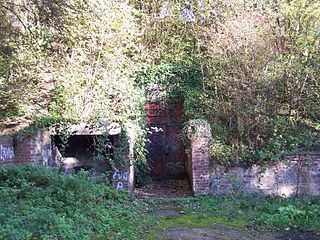
RAF Watnall was the operational headquarters of No. 12 Group, RAF Fighter Command at Watnall in Nottinghamshire, England.

Battle of Britain Day, 15 September 1940, is the day on which a large-scale aerial battle in the Battle of Britain took place.

The Dowding system was the world's first wide-area ground-controlled interception network, controlling the airspace across the United Kingdom from northern Scotland to the southern coast of England. It used a widespread dedicated land-line telephone network to rapidly collect information from Chain Home (CH) radar stations and the Royal Observer Corps (ROC) in order to build a single image of the entire UK airspace and then direct defensive interceptor aircraft and anti-aircraft artillery against enemy targets. The system was built by the Royal Air Force just before the start of World War II, and proved decisive in the Battle of Britain.
